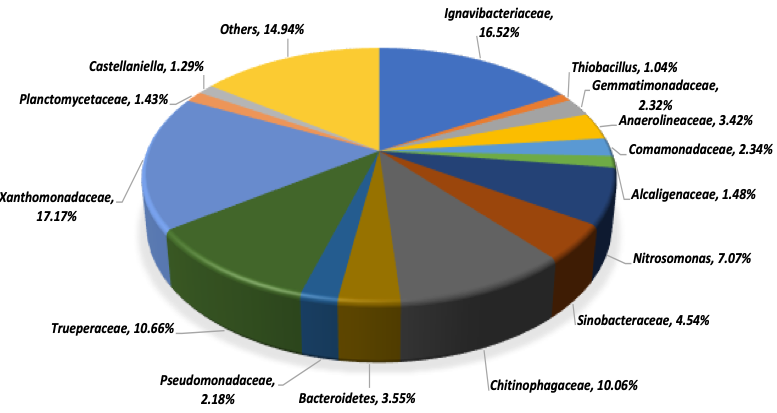 |
|
Wetlands have been considered a feasible technology for wastewater treatment in the last decades; however, information on the kinetics and microbial structure of nitrogen cycle bacteria involved on the rhizosphere activity of natural wetlands polluted with chromium is still scarce. The goal was to evaluate the kinetic behavior of nitrification, denitrification, and ANAMMOX on rhizosphere sludge, with and without chromium, through batch cultures, as well as the microbial structure using Next Generation Sequencing (NGS). The microbial sludge was able to nitrify (3.8 ± 0.2 mg NO3--N/gVSS-h) and carry out the ANAMMOX (0.67 ± 0.05 mg NH4+-N/gVSS-h), however, denitrifying activity was not observed. Chromium inhibited the nitrifying process, and the IC50 obtained for the nitrifying activity was of 7.9 mg CrVI/L. ANAMMOX activity was stopped in the presence of chromium, even to the lowest chromium concentration tested. Recovery cultures showed that ANAMMOX bacteria suffered some damage by chromium presence since they required more than 5 days to recover the activity. Microbial results indicated that Xanthomonadaceae (17.17%), Ignavibacteriaceae (16.52%), Trueperaceae (10.66%) and Chitinophagaceae (10.06%) dominated in the microbial sludge, whereas Nitrosomonas and Planctomycetaceae were in lesser proportion. This research improves the understanding of bacteria behavior on natural wetlands polluted with metals.
Keywords: Chromium, ANAMMOX, nitrification, Next-Generation-Sequencing, wetland.
|
|
 |

